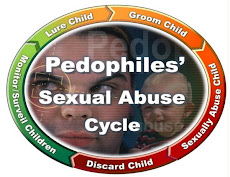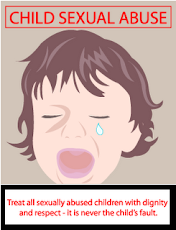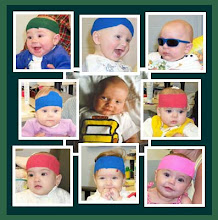Sexual harassment in education
DR WIDODO JUDARWANTO
WE SMILE WITH YOU, WORKING TOGETHER SUPPORT ALL OF CHILDREN
Organized by Yudhasmara Foundation
JL TAMAN BENDUNGAN ASAHAN 5 JAKARTA PUSAT, JAKARTA INDONESIA 10210
PHONE : (021) 70081995 – 5703646
email : wido25@hotmail.com, cfc2006@hotmail.com
www.clinicforchildren.blogspot.com/
Sexual harassment in education is unwelcome behavior of a sexual nature that interferes with a student’s ability to learn, study, work or participate in school activities. In the U.S., it is a form of discrimination under Title IX of the Education Amendments of 1972.[1] Sexual harassment involves a range of behavior from mild annoyances to sexual assault and rape.[2][3]
The definition of sexual harassment includes harassment by both peers and individuals in a position of power relative to the person being harassed. In schools, though sexual harassment initiated by students is most common, it can also be perpetrated by teachers or other school employees, and the victim can be a student, a teacher, or other school employee. Sexual harassment of students by teachers or other school employees can cause particularly serious and damaging consequences for the victim. [4] While sexual harassment is legally defined as "unwanted" behavior, many experts agree that even consensual sexual interactions between students and teachers constitutes harassment because, they say, the power differential creates a dynamic in which "mutual consent" is impossible.[2]
Sexual Harassment Support reports:
"Sexual harassment is common at every stage of education. Verbal and physical harassment begins in elementary school, and 4 out of 5 children experience some form of sexual harassment or bullying. Eight out of 10 will experience this at some point in their school lives, and roughly 25 percent will experience this often. Boys are more likely to physically harass and bully others, or to be physically bullied themselves. Girls are more likely to use, and experience, verbal and psychological harassment and bullying. Six out of 10 students will experience some form of physical sexual harassment."[4]
In their 2002 survey on 2064 students in 8th through 11th grade, the American Association of University Women (AAUW) reported:
- 83% of girls have been sexually harassed
- 78% of boys have been sexually harassed
- 38% of the students were harassed by teachers or school employees
- 36% of school employees or teachers were harassed by students
- 42% of school employees or teachers had been harassed by each other
- In their recent study (AAUW 2006) on sexual harassment at colleges and universities, the AAUW claimed that while both men and women were targets of sexual harassment, "women are disproportionately negatively affected."
- 62% of female college students and 61% of male college students report having been sexually harassed at their university.
- 66% of college students know someone personally who was harassed.
- 10% or fewer of student sexual harassment victims attempt to report their experiences to a university employee.
- 35% or more of college students who experience sexual harassment do not tell anyone about their experiences.
- 80% of students who experienced sexual harassment report being harassed by another student or former student.
- 39% of students who experienced sexual harassment say the incident or incidents occurred in the dorm.
- 51% of male college students admit to sexually harassing someone in college, with 22% admitting to harassing someone often or occasionally.
- 31% of female college students admit to harassing someone in college.
In the "Report Card on Gender Equity," the NCWGE that 30 percent of undergraduate students, and 40 percent of graduate students, have been sexually harassed. (NCWGE, 1997)
Student-on-student sexual harassment
Most sexually harassing behavior is student-on-student. In "The Report Card on Gender Equity", by the National Coalition for Women and Girls in Education (NCWGE), it was reported that, of students who have been sexually harassed, 90% were harassed by other students. (NCWGE, 1997) And in their 2006 report on sexual harassment in higher education, the AAUW reported that 80% of students sexually harassed were targeted by other students. (AAUW, 2006
One of the most common reasons reported for sexually harassing behavior is because the harasser thinks it is funny to do so. In their 2006 study, the AAUW found that this was the most common rationale for harassment by boys -- 59 percent used it. Less than one-fifth (17%) of those boys who admitted to harassing others say they did so because they wanted a date with the person. (AAUW, 2006) Other researchers assert that the "I thought it was funny" rationale is a fallacy, and the true reasons align more with that of a need to assert power and induce fear in others--more in line with bullying. These hazing behaviors develop in school, continue in high school and college, eventually moving into the workplace. (Boland, 2002)
In late 2006/early 2007 a study revealed that more than 20% of all boys had been harassed by a female student. In 15% of all cases the girl admitted to sexually harassing the boy and asserted the reasons of "I thought it was funny" and "I'm not doing any harm, it's what he wanted". High schools are addressing this behaviour.[5]
Effects of sexual harassment in education
In their 2006 report, "Drawing the Line" the AAUW found physical and emotional effects from sexual harassment:
- 68% of female students felt very or somewhat upset by sexual harassment they experienced;
- 6% were not at all upset.
- 57% of female students who have been sexually harassed reported feeling self-conscious or embarrassed
- 55% of female students who have been sexually harassed reported feeling angry.
- 32% female students who have been sexually harassed reported feeling afraid or scared.
The AAUW also found that sexual harassment effects academics and achievement:
"Students experience a wide range of effects from sexual harassment that impact their academics including: have trouble sleeping, loss of appetite, decreased participation in class, avoid a study group, think about changing schools, change schools, avoid the library, change major, not gone to a professor/ teaching assistant’s office hours. Students may experience multiple effects or just one. The wide range of experiences lowers the percentage of students who experience any particular effect." - 16% of female students who have been sexually harassed found it hard to study or pay attention in class.
- 9% of female students dropped a course or skipped a class in response to sexual harassment.
- 27% of female students stay away from particular buildings or places on campus as a result of sexual harassment. [1]
Reference
- ed.gov
- Dzeich, Billie Wright and Linda Weiner (1990). The Lecherous Professor: Sexual Harassment on Campus, University of Illinois Press.
- Drawing the Line: Sexual Harassment on Campus (2006), the American Association of University Women
- "Sexual Harassment in Education". sexualharassmentsupport.org.
.jpg)









.png)

Tidak ada komentar:
Posting Komentar